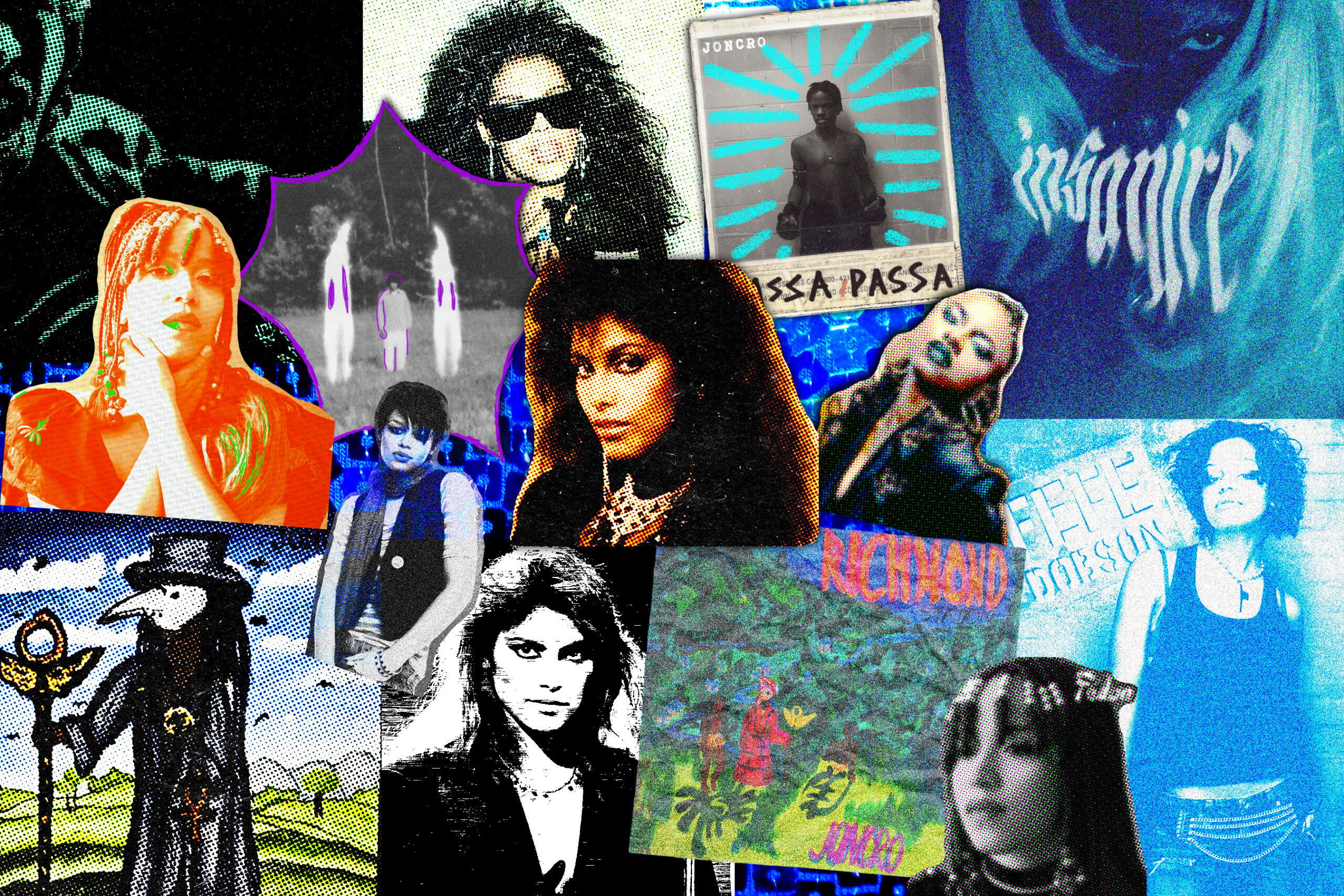Canada’s bluesy music history and all that jazz

By Zanoah Plummer
Toronto’s musical culture is a mosaic that reflects the makeup of all the cultures within the city. Euphonious soundscapes from all over the world enmesh and mould into the larger music scene of Toronto. After all, music is a universal language that needs no words. Where speech fails, raw sound has shone and has been a way to connect with and understand people worldwide. The emotive performance of instrumentalists, or the rallying wail of a vocalist requires no lingua franca to be understood.
As such, music has long been used as a tool to bring others together, to protest and to make a statement — among one of the most impactful genres is jazz. Jazz has a rich history of mixing and moving between connection and protest and blurs the line between them.
Jazz’s history as a genre starts in the United States in New Orleans, Louisiana. Like Toronto, New Orleans was also a melting pot of cultures which allowed for jazz to flourish and come to life. Created by African Americans, jazz is a genre that is distinctly American
Jazz’s history within Canada is complex and varies between its major cities. Jazz cats from America would tour up north, and homegrown talent would often embark down south to build their careers.
“It was understood as an American import,” said Peter Johnston, who has a doctorate in ethnomusicology.
A jazz musician who had a large impact on both the Canadian and American jazz soundscape was Oscar Peterson, who was born in Montreal. He was active from the 1940s through to his death in 2007. He is considered to be one of the greatest jazz pianists of all time and has worked alongside jazz superstars such as Ella Fitzgerald, Louis Armstrong and Billie Holiday.
“Everybody looked up to Oscar Peterson and…he just sort of proved that you could be from Canada and make jazz music,” said Johnston. “But there [were] lots of people like the CBC [who] played a huge role in it, because…CBC had broadcasted [and] hired musicians at the time to record live concerts and live music.”
The CBC has been an instrumental part of the careers of musicians nationally, from its creation in 1936 to the present day. Oscar Peterson got early exposure through being broadcast on CBC radio.
Oscar Peterson would often play alongside other Canadian jazz musicians, such as Lou Hooper. Hooper was one of Peterson’s jazz teachers and was involved with the Montreal jazz scene. He played with a jazz band led by Myron Sutton called The Canadian Ambassadors. The Canadian Ambassadors are considered to be one of the first all-Black Canadian jazz bands to be formed.
While touring, Peterson faced racial discrimination and segregation like many other Black jazz musicians of his time. While Canada has a complex history surrounding segregation laws, segregation did exist in Canada and was often enforced by private establishments that were given the right to discriminate on the basis of race.
Jazz bars and nightclubs were no different. In Montreal, many Black jazz musicians including Oscar Peterson were shut out of jazz bars and were denied opportunities so as to not offend the upper-class white patronage of these bars and clubs.
Much like present-day politics, the landscape of Canadian politics was often shaped and influenced by the activities of our southern counterpart. The landscape of the Canadian, but especially the Montreal jazz scene, has been shaped by American rules and regulations.
“The jazz scene of Montreal really exploded during Prohibition because it’s close to New York…and you couldn’t get booze in New York,” said Johnston. “So you had plenty of musicians coming up to play in Montreal, and Montreal became [like a] party capital because you had these incredible jazz musicians.”
Black jazz musicians faced a lot of abuse while growing their careers in both America and Canada. Jazz’s roots are deeply entrenched in the context of anti-Black racism and the Black struggle for equality that its musicians experienced. Discussions surrounding where white musicians belong in jazz have been a point of discourse for a long time.
The Casa Loma Orchestra was an all-white jazz band that performed songs at Casa Loma. They were considered to be equal competition to Black jazz bands and were a very popular dance band of their time. They were considered to be one of the largest jazz bands in North America at the time.
Without a doubt as an all-white band, the Casa Loma Orchestra would’ve had far more readily available opportunities to grow their careers than all-Black bands and soloists. Regardless of talent level and skill, there is a noticeable gap in the recognition of Black artists due to access, which is all more considerable due to the Casa Loma Orchestra’s heyday taking place in the 1930s.
Gilbert Watson is another white Canadian jazz musician who is often credited with bringing jazz to Canadian audiences. Canadian jazz bands and big bands would often include American jazz favorites in their setlists which would introduce a Canadian audience to this form of music. The white American trumpeter Curtis Little joined Gilbert Watson’s Orchestra as a soloist to produce a jazz recording that was labeled a first of its kind in Canada.
Jazz’s first origins in Canada could also be traced to touring American vaudeville performers who would play jazz music in Western Canada. Harry Thomas is also considered to be one of the first homegrown Canadian jazz musicians and has improvisational jazz recordings dating from 1916.
The history of who brought jazz to Canadian audiences is unclear. While white musicians might have introduced jazz to Canadians on a broader scale, they were not the ones who created the genre and built it up to what it is. Jazz was created by the fusion of West African musical traditions, Afro-Caribbean musical traditions and Afro-Latin musical traditions. Shutting out the people who created jazz in discussions of its spread in Canada would only tell half the truth about the genre.
Like our southern neighbour, jazz was the dominant popular music throughout the 1930s to 40s.
Jazz publications and radio stations cropped up in the 40s to meet the growing audience for it. Toronto’s local jazz radio station Jazz FM 91 formed in 1949 at Toronto Metropolitan University and switched to a 24-hour radio station in 2001.
Jazz FM 91 hosts and sponsors a myriad of jazz events in the city, ranging from festivals to concerts.
“Jazz FM definitely helped. They had the youth band orchestra that I was a part of… My biggest learning curve was getting involved with the Jazz FM program, the youth big band, to really hone my skills,” said Torontonian jazz musician Joel Harbans. “This was …when I was like, 16 or 17, [and] that really helped open my eyes to what I was going to be in for CBC.”
Historically and presently, finding venues has been a source of pain for jazz musicians. The Colonial Tavern was a Toronto jazz bar that was also one of the most popular venues in Canada. American and Canadian jazz legends such as Miles Davis, Oscar Peterson, Thelonious Monk and Carmen McRae played at the venue. It closed its doors for the last time in the late 70s and is credited with breaking racial barriers by allowing Black musicians to play at their venue.
“It’s a recurring theme because venues open and they close so quickly, especially venues that try to cater towards jazz musicians. It can be very hard to protect those places,” said Harbans. “This is why we’re so lucky to have venues like Jazz Bistro, The Rex, Poetry…the Black Bear Pub, all of these spots that really offer a space for musicians to express themselves and to keep the culture flowing. It’s really a key element to the jazz community to have long-term recognized spots.”
Toronto’s jazz scene continues to grow in spite of a venue shortage like a flower through the cracks of a sidewalk. All genres are threatened in Toronto by the squeezing effects of gentrification in the city, but jazz continues to exist and grow in Toronto despite venues all over the city struggling to survive and shuttering their doors.
Jazz no longer dominates the charts as the most dominant popular music genre. It’s no longer viewed as a genre meant for dance, but rather an intellectual sit-down listening experience.
All forms of music shift and evolve over time as they progress and reflect the society it was born out of. A genre that does not change is a dead genre. While concerns about jazz’s waning popularity arise, it still continues to grow evidenced by its change in sound as it fuses with other genres.
“What’s brilliant about jazz is that…it’s like a tree. It’s got a pretty strong trunk, but you can just keep sticking more branches to it and making new things,” said Johnston.
Toronto’s multicultural landscape allows for all of its music genres to be shaped by the cultural sound of its many residents. Jazz has always been a cultural experience, in its case for African Americans, but other jazz scenes worldwide that blend the lines between traditional cultural music and jazz have also allowed for fresh sounds within the genre. From Mulatu Astatke in Ethiopia to Sadao Watanabe in Japan, the genre has blossomed far beyond American soil since it first emerged. Johnston stated that cultural jazz fusion creates new may allow for more people to resonate with the genre — something that is necessary for the genre to survive.
As jazz steers away from being a genre defined by politics and is rather viewed as an intellectual experience, it is important to preserve and understand the history it was born out of.
“I think the long-term goal for the shape of music in Toronto, should be going towards that historical aspect of really teaching your audience about the significance of what jazz is in all of its forms. Whether you’re talking about blues, whether you’re talking about hard bop [or] whether you’re talking about the cool jazz era with Miles Davis,” said Harbans. “I would like to see the history of Toronto kind of moving towards teaching more about the importance of jazz music, rather than just presenting very abstract ideas and thoughts without really making a connection to the audience of why it’s so important to know about this.”
Jazz weaves the stitches of modern music together. It is the basis of many modern genres, such as rock, R&B and hip-hop and continues to inspire musicians globally far past its prime. While it may not be heard directly through the ears of listeners of current pop music, its influence makes up the very notes spoken by the favorite artists of many.
Jazz has had issues finding places to grow, both in the past and presently, but has still found a way to have a profound impact on current popular music. It’s a genre defined by its resilience and ability to adapt to the current world it exists in.
“I don’t think jazz is any different to anything else like it. It kind of has to change as humans change. We’re not the same humans we were 100 years ago,” said Johnston.
“The audience is different, how the world works is different and for jazz to continue, it has to account for that. And to me, that’s a feature, not a bug.”





Leave a Reply